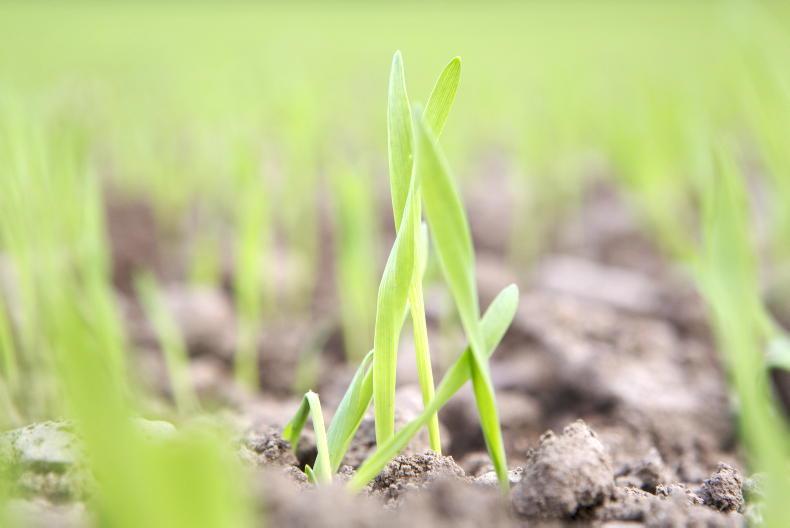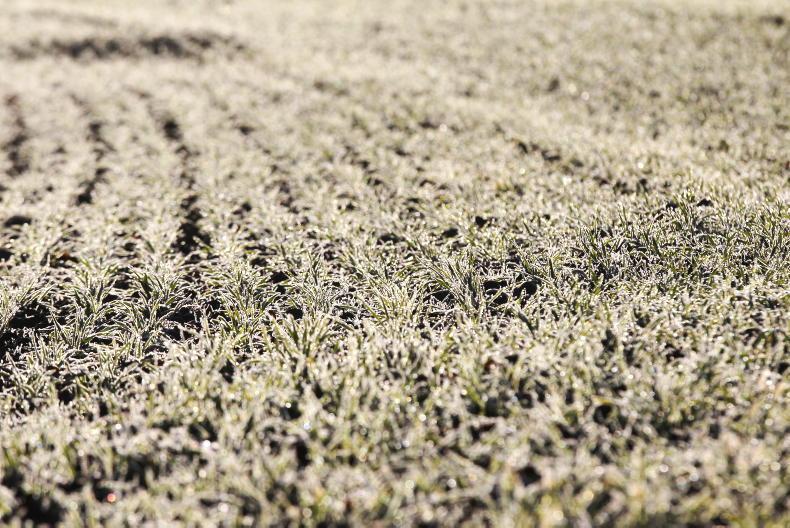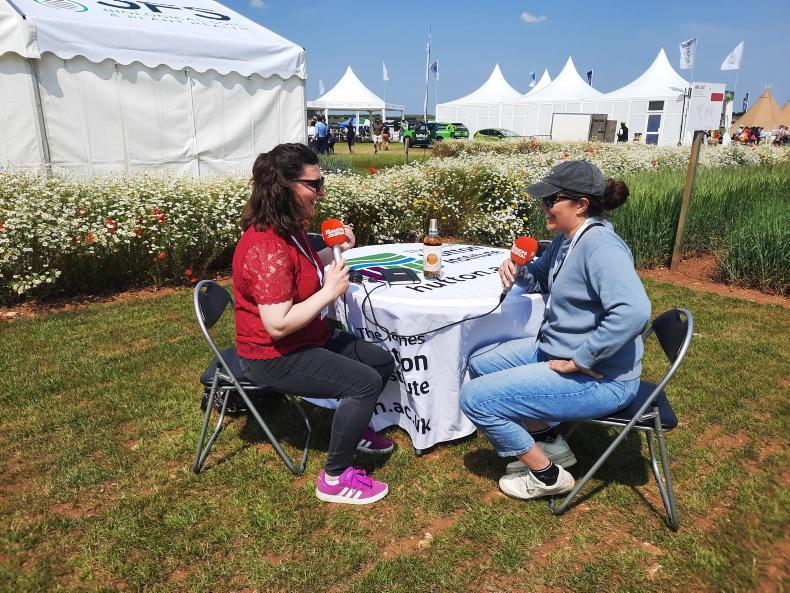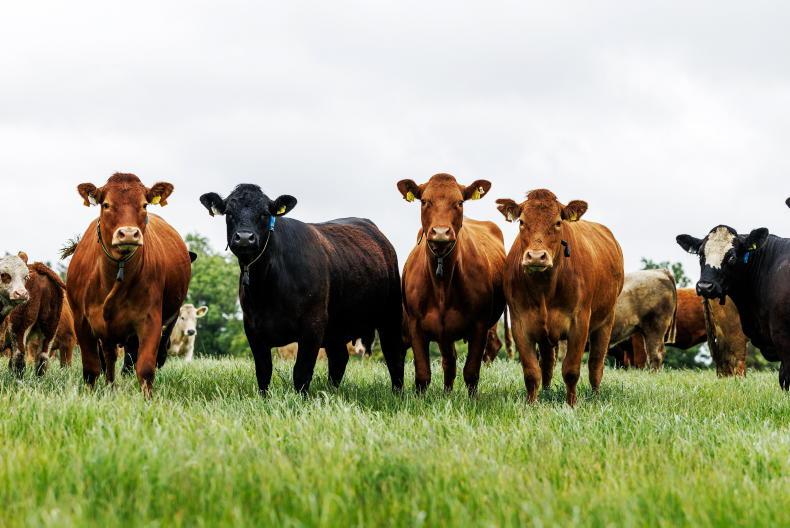Weather remains harsh: April definitely felt on the cold side and May has not brought anything better yet, but it might.
On average, air temperatures for April were about 3°C below normal for the month, but slightly less in the south.
Monday’s rain was welcome and it ranged from 4.4mm in the south to around 20mm in parts of the north.
But the dry spell enabled work on tillage farms to be done on time and things are now generally up to date.
Despite the cold, wheat crops arrived at GS32/third-last leaf emerged at the usual time as April moved into May, as did winter barley for GS 37/39.
Planting of all crops is now virtually completed and generally in good conditions.
The recent rain should help those crops that were struggling with establishment.
Winter crops: Winter wheat spraying is largely up to date, with T1 sprays well under way.
Some winter barley crops have awns appearing but most crops are at flag leaf emerging to booting. The cold conditions have pulled the most forward crops back a bit.
Winter barley crops that received their first fungicide in early April should really get a second around now as a stopgap before the awns emerging/heading out spray.
The final fungicide could still be two to three weeks from now.
With crops likely to be heavily stressed by recent low temperatures, it is possible that this could trigger additional ramularia pressure this year.
Nothing is certain, but if that is the case there is likely to be an advantage from having folpet applied in the middle and last spray of three.
Stop-gap sprays will tend to be a triazole mix or a triazole plus a strobilurin or an SDHI active. Avoid triazoles alone and at least add folpet in apparently clean crops. Other options include products like Boogie (1.2 l/ha) if mildew is present, Ceriax (2.2 l/ha), Coyote (0.6 l/ha), Elatus Era (0.6 l/ha) or Fandango (1.0-1.2 l/ha).
Spring crops: Crops vary in growth stage from around GS12 to around GS25 and filling out between the rows.
Early crops are obviously most advanced and they should have no worries about BYDV.
Later-sown crops fit into the risk category for virus but it seems unlikely that aphids have produced winged progeny up to now, given the frost and low daytime temperatures. So there should be no major need to rush out with aphicide yet and some early April-sown crops may not need an aphicide at all if the cold lasts much longer.
While the rain was welcome, the risk of trace element deficiency continues where soils remain relatively dry and on all susceptible ground. Don’t wait for symptoms to show.
Early crops will now need herbicide for broad-leaved weeds, plus wild oats and maybe some problem grasses like canary grass.
Weed control should have a mix of actives given the prominence of SU resistance.
This can be done with SUs plus a different active, or products like Galaxy, Pixxaro or Zypar, depending on the weeds present.
Weather remains harsh: April definitely felt on the cold side and May has not brought anything better yet, but it might.
On average, air temperatures for April were about 3°C below normal for the month, but slightly less in the south.
Monday’s rain was welcome and it ranged from 4.4mm in the south to around 20mm in parts of the north.
But the dry spell enabled work on tillage farms to be done on time and things are now generally up to date.
Despite the cold, wheat crops arrived at GS32/third-last leaf emerged at the usual time as April moved into May, as did winter barley for GS 37/39.
Planting of all crops is now virtually completed and generally in good conditions.
The recent rain should help those crops that were struggling with establishment.
Winter crops: Winter wheat spraying is largely up to date, with T1 sprays well under way.
Some winter barley crops have awns appearing but most crops are at flag leaf emerging to booting. The cold conditions have pulled the most forward crops back a bit.
Winter barley crops that received their first fungicide in early April should really get a second around now as a stopgap before the awns emerging/heading out spray.
The final fungicide could still be two to three weeks from now.
With crops likely to be heavily stressed by recent low temperatures, it is possible that this could trigger additional ramularia pressure this year.
Nothing is certain, but if that is the case there is likely to be an advantage from having folpet applied in the middle and last spray of three.
Stop-gap sprays will tend to be a triazole mix or a triazole plus a strobilurin or an SDHI active. Avoid triazoles alone and at least add folpet in apparently clean crops. Other options include products like Boogie (1.2 l/ha) if mildew is present, Ceriax (2.2 l/ha), Coyote (0.6 l/ha), Elatus Era (0.6 l/ha) or Fandango (1.0-1.2 l/ha).
Spring crops: Crops vary in growth stage from around GS12 to around GS25 and filling out between the rows.
Early crops are obviously most advanced and they should have no worries about BYDV.
Later-sown crops fit into the risk category for virus but it seems unlikely that aphids have produced winged progeny up to now, given the frost and low daytime temperatures. So there should be no major need to rush out with aphicide yet and some early April-sown crops may not need an aphicide at all if the cold lasts much longer.
While the rain was welcome, the risk of trace element deficiency continues where soils remain relatively dry and on all susceptible ground. Don’t wait for symptoms to show.
Early crops will now need herbicide for broad-leaved weeds, plus wild oats and maybe some problem grasses like canary grass.
Weed control should have a mix of actives given the prominence of SU resistance.
This can be done with SUs plus a different active, or products like Galaxy, Pixxaro or Zypar, depending on the weeds present.










SHARING OPTIONS